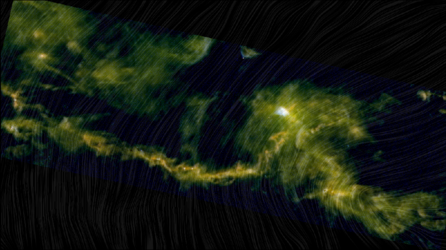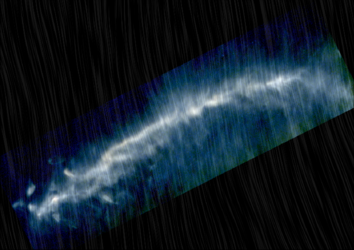Accept all cookies Accept only essential cookies See our Cookie Notice

About ESA
The European Space Agency (ESA) is Europe’s gateway to space. Its mission is to shape the development of Europe’s space capability and ensure that investment in space continues to deliver benefits to the citizens of Europe and the world.
Highlights
ESA - United space in Europe
This is ESA ESA facts Member States & Cooperating States Funding Director General Top management For Member State Delegations European vision European Space Policy ESA & EU Space Councils Responsibility & Sustainability Annual Report Calendar of meetings Corporate newsEstablishments & sites
ESA Headquarters ESA ESTEC ESA ESOC ESA ESRIN ESA EAC ESA ESAC Europe's Spaceport ESA ESEC ESA ECSAT Brussels Office Washington OfficeWorking with ESA
Business with ESA ESA Commercialisation Gateway Law at ESA Careers Cyber resilience at ESA IT at ESA Newsroom Partnerships Merchandising Licence Education Open Space Innovation Platform Integrity and Reporting Administrative Tribunal Health and SafetyMore about ESA
History ESA Historical Archives Exhibitions Publications Art & Culture ESA Merchandise Kids Diversity ESA Brand Centre ESA ChampionsLatest
Space in Member States
Find out more about space activities in our 23 Member States, and understand how ESA works together with their national agencies, institutions and organisations.
Science & Exploration
Exploring our Solar System and unlocking the secrets of the Universe
Go to topicAstronauts
Missions
Juice Euclid Webb Solar Orbiter BepiColombo Gaia ExoMars Cheops Exoplanet missions More missionsActivities
International Space Station Orion service module Gateway Concordia Caves & Pangaea BenefitsLatest
Space Safety
Protecting life and infrastructure on Earth and in orbit
Go to topicAsteroids
Asteroids and Planetary Defence Asteroid danger explained Flyeye telescope: asteroid detection Hera mission: asteroid deflection Near-Earth Object Coordination CentreSpace junk
About space debris Space debris by the numbers Space Environment Report In space refuelling, refurbishing and removingSafety from space
Clean Space ecodesign Zero Debris Technologies Space for Earth Supporting Sustainable DevelopmentApplications
Using space to benefit citizens and meet future challenges on Earth
Go to topicObserving the Earth
Observing the Earth Future EO Copernicus Meteorology Space for our climate Satellite missionsCommercialisation
ESA Commercialisation Gateway Open Space Innovation Platform Business Incubation ESA Space SolutionsEnabling & Support
Making space accessible and developing the technologies for the future
Go to topicBuilding missions
Space Engineering and Technology Test centre Laboratories Concurrent Design Facility Preparing for the future Shaping the Future Discovery and Preparation Advanced Concepts TeamSpace transportation
Space Transportation Ariane Vega Space Rider Future space transportation Boost! Europe's Spaceport Launches from Europe's Spaceport from 2012Latest

Stars forming in the Taurus Molecular Cloud
Thank you for liking
You have already liked this page, you can only like it once!
The intricate jumble depicted in this image from ESA’s Herschel space observatory shows the distribution of gas and dust in the Taurus Molecular Cloud, a giant stellar nursery about 450 light-years away in the constellation Taurus, the Bull.
Launched in 2009, Herschel studied the sky at far-infrared wavelengths for almost four years, detecting the glow of cosmic dust in the interstellar medium that pervades our Galaxy, the Milky Way. Dust is a minor but crucial ingredient in this diffuse mixture that provides the raw material for stars to form.
One of the observatory’s most striking discoveries was the detection of ubiquitous filaments – elongated and thin structures of gas and dust weaving their way across the Galaxy. Interstellar filaments were already known before Herschel, but the new data revealed them almost everywhere in the Milky Way and highlighted their role as preferred hubs for stellar birth.
Astronomers now believe that filaments precede the onset of most star formation, funnelling interstellar gas and dust into increasingly denser concentrations. Gravity later causes the densest filaments to contract and fragment, eventually leading to the formation of stars.
This image shows a tangle of filaments emerging from the cloud material, which are dotted with a few compact, bright cores: the seeds of future stars. The view also reveals a network of smaller threads, perpendicular to the most prominent filament.
This pattern is suggestive of accretion flows, indicating that the material along filaments is not at all static and that the most massive among them might be drawing matter from their surroundings. Some numerical simulations of star formation in molecular clouds also predict a similar arrangement of interstellar material, with gas and dust streaming towards the densest filaments along routes that are shaped by the local magnetic field.
This three-colour image combines Herschel bands at 160 microns (blue), 250 microns (green) and 500 microns (red), and spans about 5º on the long side. The data were acquired with Herschel as part of the Gould Belt survey Key Programme in 2010 and 2012, and a study of the filamentary structure is presented in a paper by P. Palmeirim et al. 2013. The image was first published on ESA’s Science and Technology website in May 2015.
-
CREDIT
ESA/Herschel/PACS, SPIRE/Gould Belt survey Key Programme/Palmeirim et al. 2013 -
LICENCE
ESA Standard Licence

Herschel’s view of the Taurus molecular cloud

Taurus molecular cloud

Taurus Molecular Cloud viewed by Herschel and Planck

The Musca molecular clouds viewed by Herschel and Planck















 Germany
Germany
 Austria
Austria
 Belgium
Belgium
 Denmark
Denmark
 Spain
Spain
 Estonia
Estonia
 Finland
Finland
 France
France
 Greece
Greece
 Hungary
Hungary
 Ireland
Ireland
 Italy
Italy
 Luxembourg
Luxembourg
 Norway
Norway
 The Netherlands
The Netherlands
 Poland
Poland
 Portugal
Portugal
 Czechia
Czechia
 Romania
Romania
 United Kingdom
United Kingdom
 Slovenia
Slovenia
 Sweden
Sweden
 Switzerland
Switzerland

























